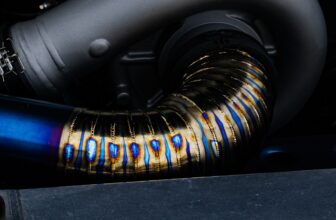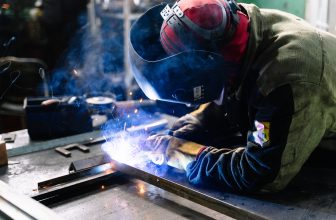In this blog post, we will explore the advantages of MIG welding over stick welding. MIG welding is a process that uses a wire electrode to create a weld. It is often chosen for its high quality and speed. Stick welding, on the other hand, uses a metal electrode to create a weld. It is often chosen for its low cost and portability. So, which process is right for you?
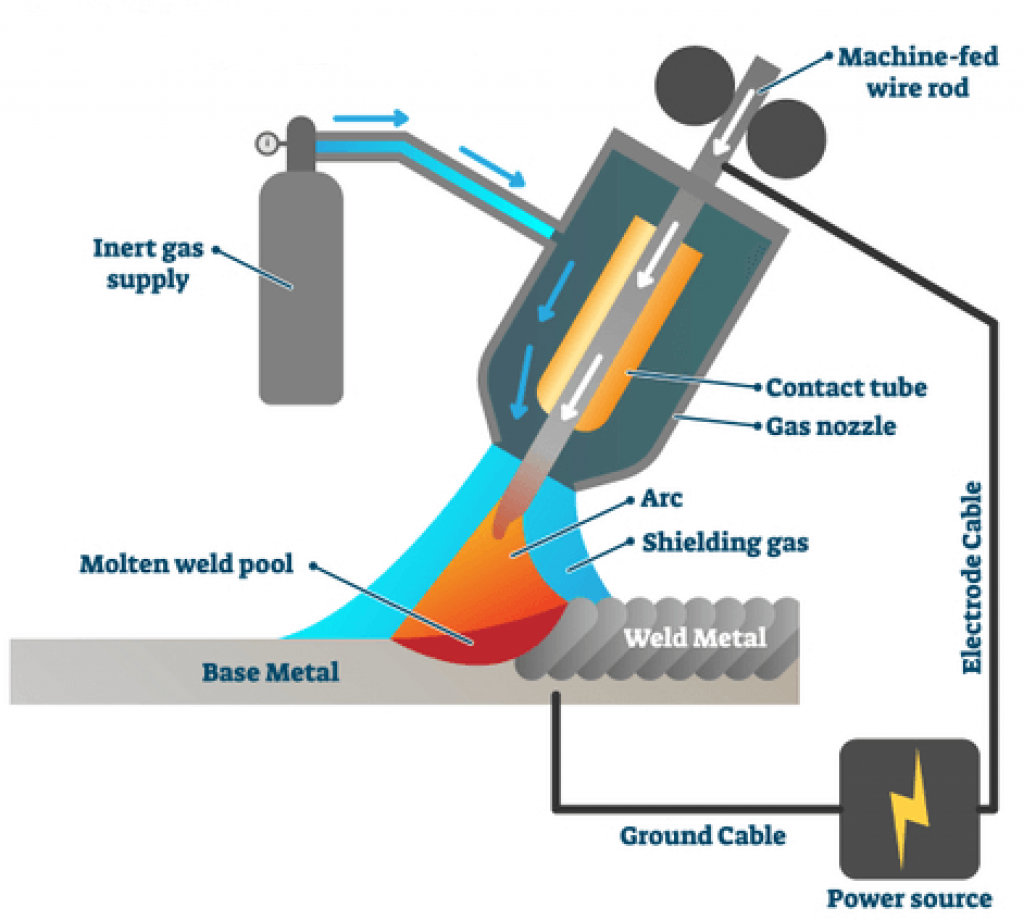
What is MIG Welding?
MIG welding is a form of arc welding that employs consumable electrode spools. Electricity flows through the wire as it melts the electrode and the base metal, feeding it at a predetermined speed.
MIG welding is the most popular of the weld processes, and it’s typically accomplished with a DC (direct current) or reversed polarity. The base metal and electrode melt together in a molten weld pool, which is protected from outside air contaminants by a shielding gas.
Still not sure whether to weld with DC or AC? We have an article explaining the difference.
MIG welders have a minimal range of adjustments and features. The majority of MIG welders only have three settings for wire-speed, polarity, and voltage. The welding device’s spool gun is also simple to use, with a trigger and an on/off switch.
Advantages of MIG welding vs stick welding
MIG welding has several advantages, including:
- MIG welding is accurate to a very high degree, capable of welding material as thin as 24 gauge and producing complex weld patterns.
- MIG welding is a clean process with little spatters that produces smooth, high-quality, slag-free joints that only require minor cleanup.
- Suitable for all types of metals: You can weld a variety of alloys with this stick wire welding kit, including stainless steel and aluminum.
- MIG welding is one of the quickest welding processes, resulting in enhanced production.
- MIG welding is simple to learn and the equipment is simple to use, allowing even a novice welder to start producing acceptable welds right away.
- Flux-cored welding is also possible with MIG welding.
Disadvantages of MIG welding vs stick welding
Despite all of its advantages, MIG welding has a few drawbacks:
When to use MIG welding?
MIG welding is a flexible process that may be used on a wide range of materials and is simple to learn, allowing it to be utilized for a broad range of activities. In workshop applications, MIG welding can be used on both thin and thick materials, and it may be done in a variety of welding techniques.
It’s also compatible with alloys, including aluminum, copper, and magnesium as well as stainless steel, carbon steel, and nickel. MIG welding is utilized in a variety of sectors, including oil and gas, power generation, automobile manufacturing, construction, rail transportation, shipping, and more.
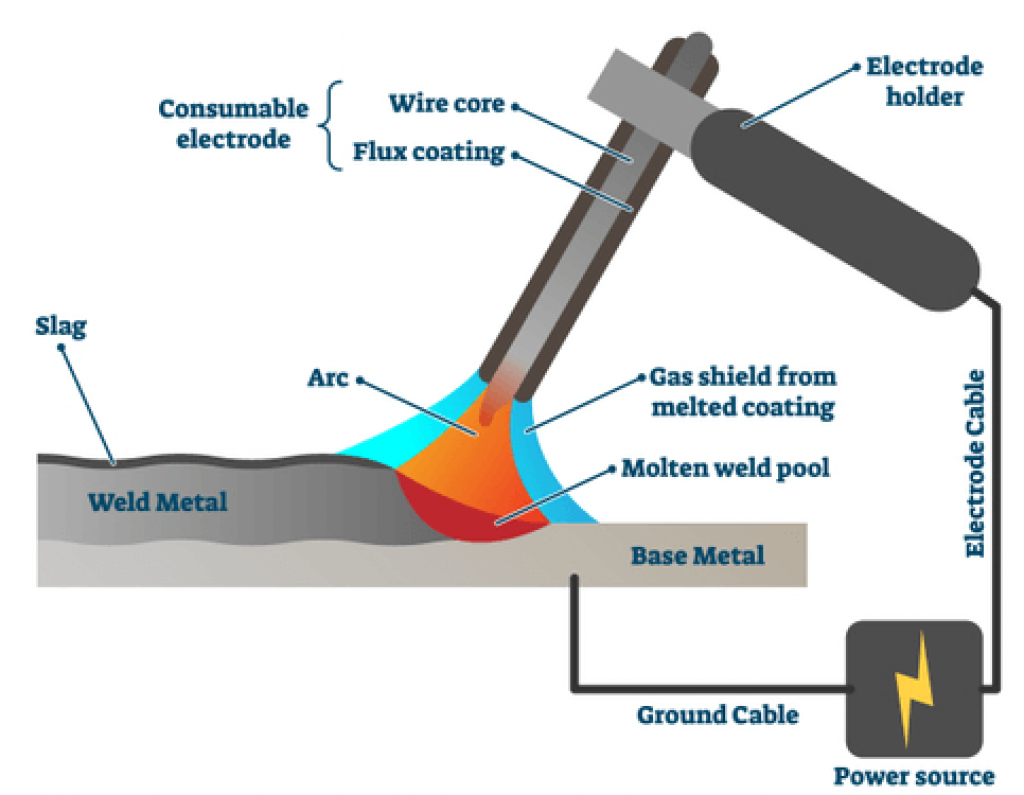
What is stick welding?
Stick welding is a form of electric arc welding in which a metal stick or rod serves as the filler material. The sticks are usually immersed in a flux solution and available in a variety of diameters and lengths. Use the proper sort of flux core wire welding rod for your application to create strong welds.
Mechanics of stick welding
Stick welding is a type of arc welding that uses a DC or reverse polarity current, similar to MIG welding. An arc is formed between the welding rod or stick and the base metal when this happens. Both the base metal and filler rod are melted by the heat of this arc, which produces droplets of a molten metal.
Due to the intense heat, some of the flux vaporizes, providing a protective gas that aids in arc stabilization. The molten melt pool, which is completely encrusted in flux, protects the rest of the weld from contamination and oxidation. Flux eliminates the need for an external gas supply, as with MIG welding.
When is stick welding commonly used
For many years, stick welding has been the most frequent and popular technique of welding. It’s the preferred method of welding for do-it-yourselfers and electricians. It is commonly used to weld a wide range of metals, including steel alloys.
The stick welder may be used in all kinds of settings, including low-ceilinged rooms and drafty areas. Stick welding is the most cost-effective method of welding and can be used to make strong joints on rusty or dirty materials.
Advantages of stick welding vs MIG welding
Lets have a look at the advantages of stick welding
Disadvantages of stick welding vs MIG welding
Lets have a look at the drawbacks of stick welding
- Appearance of slag: Welding slag on the metal can be a risk. This must be scraped or chipped away, before continuing with further welding.
- Risk of spatter: Greater amount of spatter is formed during stick welding, compared to DC welding.
- Stop and start welding: The need to replace the filler rods lead to interruptions, and add up to the time to complete the job.
- Welding Thinner Metals: Stick welding is not recommended for welding metals with thicknesses less than 1/8 inches.
Dual Shield Flux Core (MIG equivalent of stick welding)
In our view, dual shield flux core MIG is similar to a stick weld in that both produce slag and penetrate as well. There is a risk of slag being created, while it penetrates similarly to a stick electrode in most uses. This method is often used for structural reasons, with beads running the gamut.
Fused wire, like that found in MIG and TIG welders, has flux built-in to provide shielding properties. A gas cylinder is also used for its effect. When Steel targets are extended by adding more guns, the double shielding effect gives outstanding penetration.
It’s a fantastic means of covering the ground, but it’s best suited for thicker steels and for bigger projects. If you’re comfortable welding with a stick, dual shield MIG should be a walk in the park.
Is Stick Welding Easier than MIG?
MIG welding is a lot simpler to learn than stick welding for a someone starting out. However, setting up MIG welder equipment might be complicated because there are numerous factors to consider, such as wire size and kind, gas pressure, contact tips, and nozzle type. The results are cleaner welds that need less cleaning.
Why Is Stick Welding More Durable Than MIG?
Some claim that stick welding is more durable than MIG welding since it allows for deeper penetration when working with thicker materials.
On the other hand, MIG welding can produce excellent welds despite not being as good for thicker metals, and it’s preferable for joining thinner metals with a high finish and less risk of burn-through.
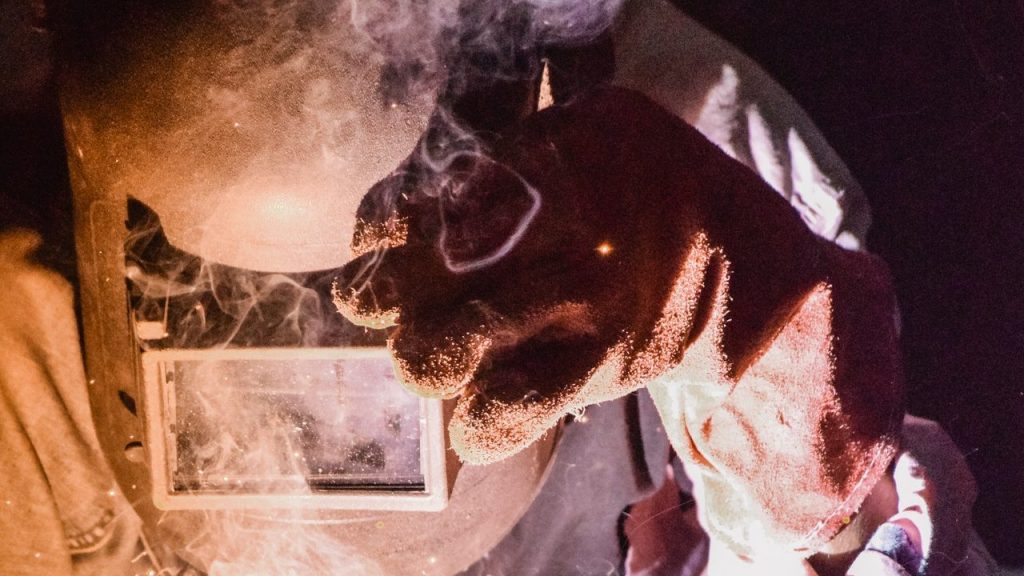
What are some similarities?
Stick welding and MIG welding are both arc welding processes. Each uses a shielding gas for protection, ensuring that the molten weld pool is safe. And most of all, both can produce excellent welds.
The two processes are nevertheless quite similar. Both welding procedures employ a welding electrode that must be replaced regularly during the duration of the process. Additionally, they weld mild and stainless steel, cast iron and aluminum.
So, in a nutshell, they are more similar than some may believe. However, the distinctions become apparent as you delve further into the details.
Using MIG and stick welding outside
A MIG welder’s shielding gas can be difficult to keep on the weld pool on a windy day. The gas is simply blown away as it courses out of the torch and does not cover the weld.
The shielding is outgassing from the flux reacting with the weld puddle with a stick welder. In addition, the flux forms slag, which acts as an electron shell to keep the inert gases in place. Gas generation in this manner better shields the weld against wind gusts up to 35 mph. In windy situations, stick welding has an advantage over MIG welders. Even minor winds can cause problems for MIG equipment.
However, your MIG welder can still be used for outdoor projects. A unique type of wire known as a flux-cored wire may be used by MIG welders. The metal core is hollow in the middle, and the cavity is filled with flux.
Both produce quality welds
Weld quality, in practice, depends on both your knowledge and technique of welding, thus it is accurate to state that both may produce good welds. That being said, slag and spatter are more prominent when stick welding.
When compared to other types of welding, MIG welders are known for producing cleaner welds with less clean-up after welding. That, however, is offset by the amount of pre-welding preparation/cleaning needed with MIG welding.
Depending on the material and your preference, stick welders may produce higher-quality welds. However, as a result of their increased penetration, stick welders may make stronger welds in certain cases.
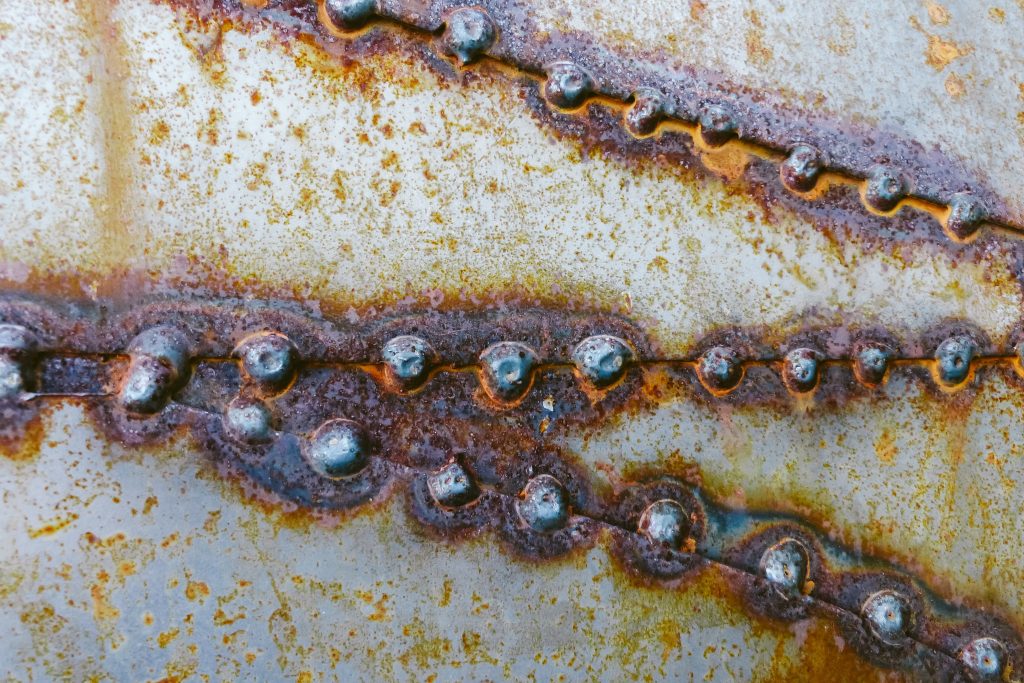
Surface preparation for stick vs MIG welding
When it comes to dirty or rusted metal, stick welders outperform MIG welders. They’re rather forgiving, and you can produce strong welds with dirty material.
MIG welders might have higher requirements for the surface prep, requiring a cleaner surface, removing as many impurities from the welding surface as you can, to achieve good welds.
Both MIG and stick welding are easy to use
It’s also worth noting that the wire is fed from a spool to the torch, which means there are more settings to adjust and a tank of shielding gas is required; MIG welders are somewhat more difficult to set up. Plus, MIG welding wire can get snagged and tangled.
There are far fewer variables and consumables to worry about when using a stick welder. There are fewer settings to consider, making the setup much easier.
However, if you need high production volumes, a MIG welder is preferable since the wire spool must be changed far less frequently than stick electrodes. You get more feet of beads per hour with fewer changes using a MIG welder.
Beginners are also typically advised to power down the machine and reverse it to take out the shield. This will not only prevent you from damaging your welding equipment, but it will also simplify setting up the correct amperage setting. Powering down and reversing a MIG welder is rather simple once everything is set up correctly
Use stick welding for cast iron welds
Welding aluminum and cast iron is one of the most significant differences between MIG and stick welding. Because both welders can weld each of these metals, it may be a little perplexing. So, here’s what I mean.
Stick welding should be used first when it comes to welding cast iron. Yes, you must preheat the iron and take additional steps, but there are a lot of stick electrodes to choose from, and you can get a solid weld.
Stick welding is the best choice for iron because it produces a weld with no CCA losses. However, stick welding iron does not result in as strong a weld as MIG welding cast iron.
Use MIG welding for aluminum
Stick electrodes for aluminum are difficult to keep because moisture in the air soon makes the flux sticky and gelatinous. Furthermore, when welding aluminum with a stick, you must move fast. It may even feel too rapid for novices. MIG welding without a flux uses an aluminum wire. As a result, it’s far easier to store.
Feeding the softer wire may be difficult, and your MIG welder may need a specific spool gun. Welding aluminum, on the other hand, is easier than most metals. It also leaves a cleaner weld with no slag and less spatter, which is great for most aluminum projects.
Both welding processes come with safety issues
Welding presents a shock danger, and you must take precautions to safeguard yourself. Welders may be injured or killed, by an electrical shock.
MIG welders also come with a can of compressed gas. They must be handled with care to avoid injuring oneself since they are hazardous. There are numerous hazards, including asphyxiation from a gas leak and falling over. And I know, they are quite hefty.
You’ll need good ventilation if you use a stick welder. The vapors are dangerous. Even though you may not notice it at first, there’s a lot of spatter. Sparks are flying in all directions. You’ll need to be extra cautious while working around the fire pit to avoid getting burned or injured by flying sparks.
Cost advantages of MIG welding vs stick welding
MIG welders are more complicated to operate and have a greater learning curve. They require the use of gas, which adds to their cost. When purchasing a welder, it is often considered low-cost vs cheaper than other forms of welding. Gas handling and wire feeding make MIG welders more difficult to use. More difficult translates to more time and effort to learn how to use them.
Many people, calculate the cost of welding in terms of dollars per pound of filler material. Some claim that MIG compares favorably with this sort of research, which calculates the welder when used. According to some $/lb analyses, stick is about half the price.
So, in my opinion, it all depends on your employment. I feel that a wand is usually less expensive than a stick.
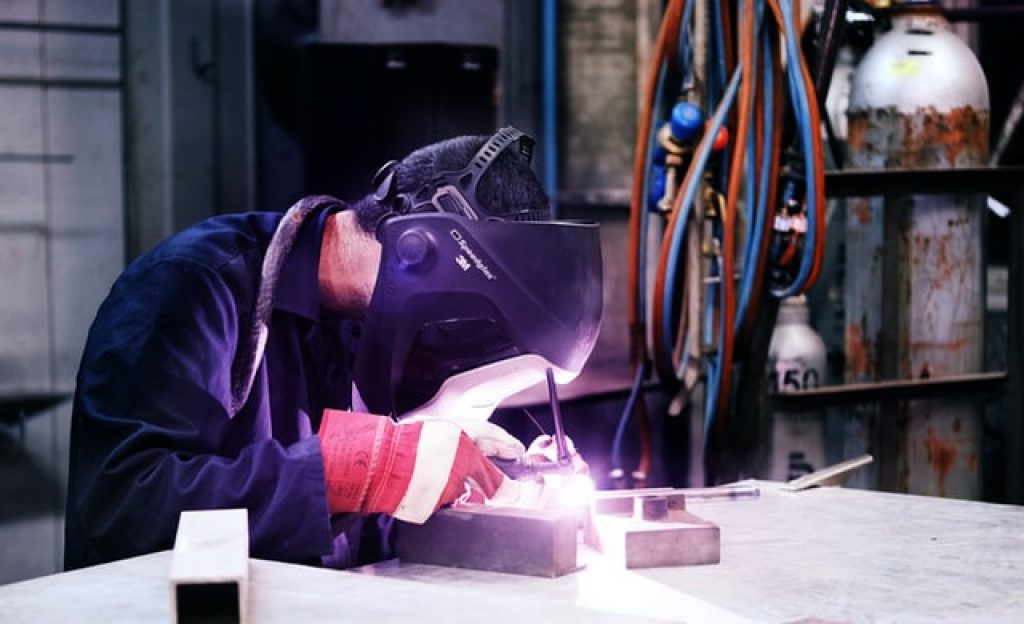
Advantages of MIG vs stick welding: which ones are better?
This is a difficult question to answer since it is hard to distill the benefits and drawbacks of all these home-based business options. I would say that neither is superior to the other; rather, they excel in different situations.
So, the type of welder that is right for you depends on your job. A MIG welder would be superior if you weld thin metals. If you work outside a lot, a stick welder may be more appropriate.
If you work with aluminum on a regulator basis, the MIG welder with a spool gun is your best bet. If cast iron is a big portion of your job, a stick welder may be a more cost-effective option for you.
Knowing what you’ll accomplish can help you decide which of these two welder choices is best for you. Knowing the characteristics of each machine will assist you in deciding which one to use for each task that comes your way if you own both a MIG and a stick welder.






